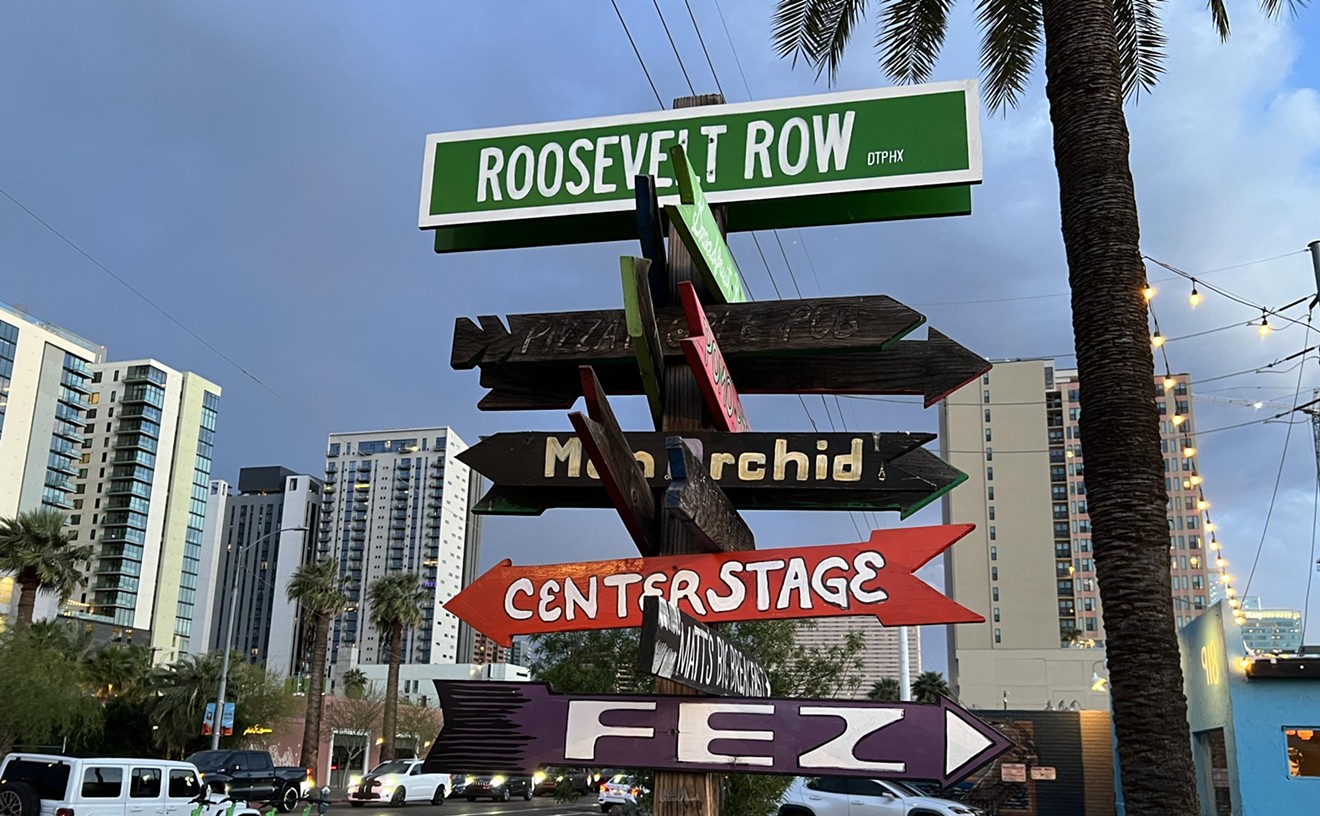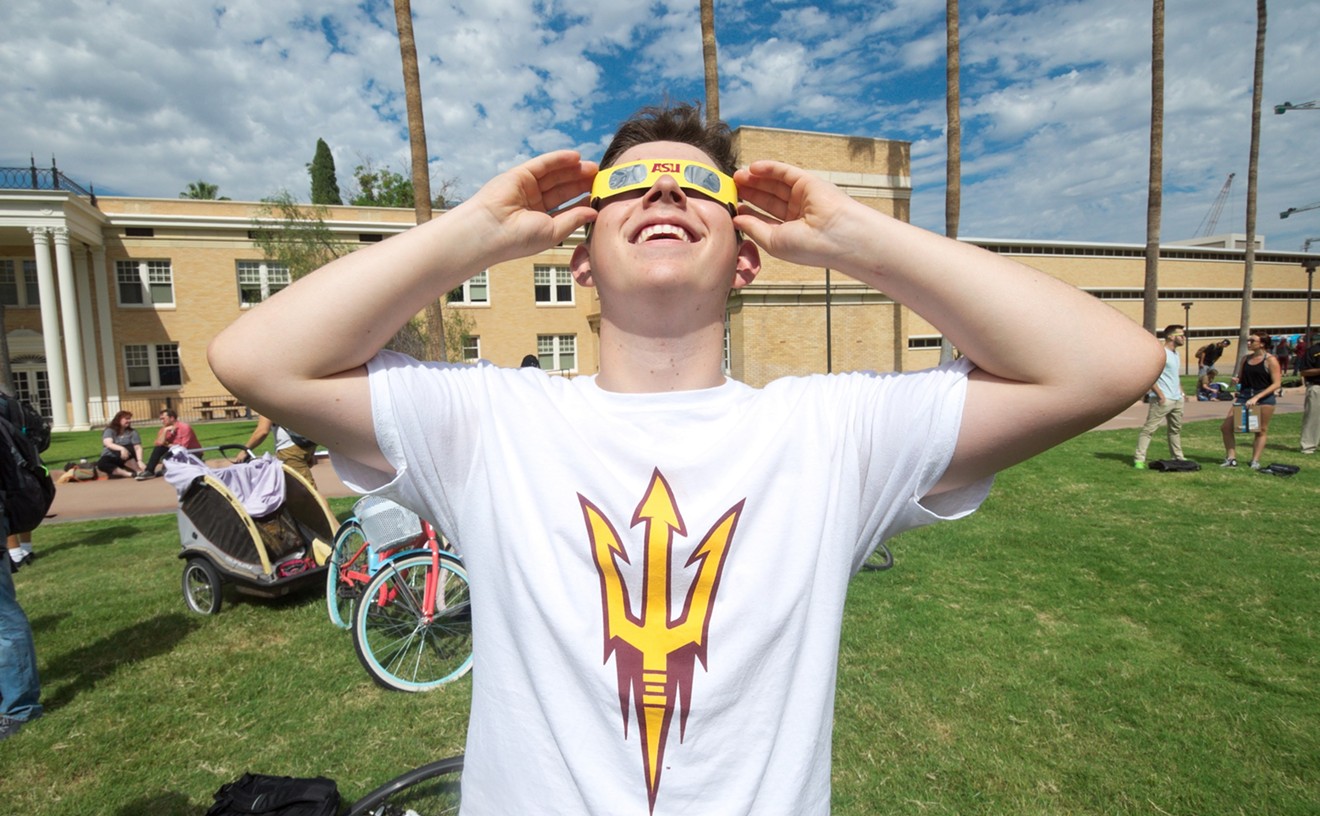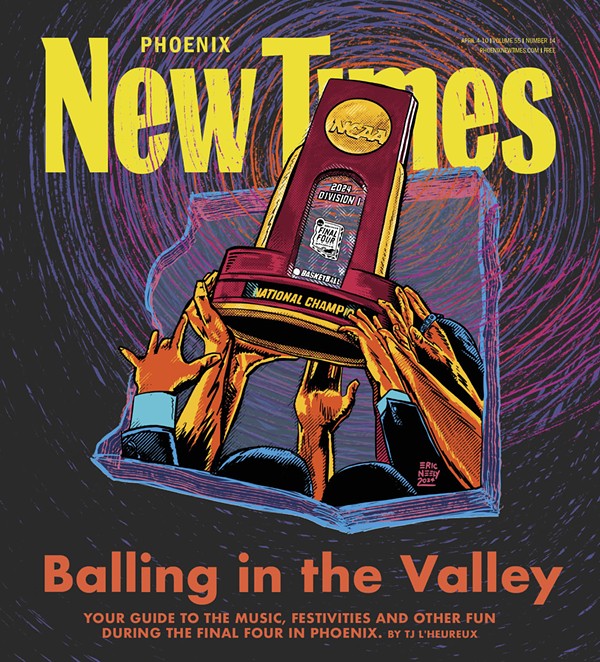This didn't happen at the Madison Square Garden that's currently at 118 North Seventh Avenue, which is actually not Madison Square Garden at all but rather a new building that bears its name and resides where the old Garden used to stand. According to people who really ought to know, I was attacked with sushi not at the original Madison Square Garden but rather at a different building on East Van Buren (also now gone), to which the old Madison Square Garden briefly relocated in the early '80s.
Built in 1929 for professional boxing and wrestling matches, the then-largest indoor arena in Phoenix was named after a more famous venue in New York City. All the biggest heels and baby faces fought and wrestled there: flamboyant Gorgeous George and Jimmy Londos, who were already famous, and later, local guys like Tito Montez, who would become famous fighting there. With the advent of television, people turned to their sets for pugilistic sports, so the Garden began booking revival meetings and musical acts, mostly country stars like Marty Robbins and Johnny Cash but also some early rockers like Duane Eddy and Lee Hazlewood.
By the late '70s, no one was coming downtown to watch boxing matches anymore, and the building was sold to an auto parts manufacturer, who ripped it apart to make room for boxes of bumpers and exhaust manifolds. In 2005, he sold it to the city, which tore it down and replaced it with a new office building that's sitting empty, presumably because no one can afford to rent there.
Somewhere in there — I swear! — the place became a punk rock club. I remember being walloped by a fish at this big, smelly, old building; watching Jodie Foster's Army scream and The Ultimate Makeup Party Bitches try to harmonize.
I'm wrong, according to Robert X. Planet, former frontman of local punk legends Killer Pussy. "We played Madison Square Garden, you got that part right," Planet told me when I called him the other day. "And we threw fish during our show. But it was on Van Buren. We never played the one on Seventh Avenue."
Planet, who used to be a New Times calendar editor, would never lie to me. But why would I remember being somewhere when I hadn't? Had that fish given me a concussion?
"People are often confused about Madison Square Garden," Vince Murray assured me. Murray is an historian with Arizona Historical Research and curator of the Madison Square Garden Museum, located where the original arena stood.
Turns out there were three different Madison Square Gardens in Phoenix — that is, if you count the new building where the museum is housed (I don't). There was the original one on Seventh Avenue, which relocated in the '80s to a grungy spot with a wrestling cage on Van Buren Road at about 32nd Street and eventually morphed into the punk rock club known as Mad Gardens, where the Meat Puppets got their start and presumably where I and a whole lot of other people with lamentable hairstyles got pelted with trout by Killer Pussy.
Looking for a little clarity, I visited Murray's Madison Square museum the other day. I was expecting docents; glass cases filled with old boxing posters and Frank Discussion 45s; maybe a prerecorded tour involving a clever little headset. Instead, there was a man named Bob, whose lunch I interrupted. "I've got a video I could show you about the original building," Bob said through a mouthful of what smelled like pastrami. "That's about it."
He wasn't kidding. The museum is a broom closet, hung with a couple dozen photographs that have been made large and fastened under sheets of Plexiglas. Most of the original fixtures — the seats, the wrought-iron marquee, the concession cases — were chucked when the Garden became an auto parts warehouse. After Bob went back to his lunch, I wandered through this small gallery, which is nice if you happen to like big, grainy black-and-white photos of half-naked men. After a few minutes, I'd seen everything twice, including a trio of largish plaster ornaments salvaged from the original Madison Square Garden, so I left. Turns out there's actually more to see outside: The public art portion of the museum features steel trusses from the original building, shading a pair of nine-foot abstracted bronze sculptures titled "The Opponents" by artist Rebecca Thompson.
The museum, which opened a year ago this month, is clearly a consolation prize from the city to appease preservationists who were pissed off that the original building, which wasn't registered as historic, was razed. Attempts made to preserve some of the old Garden, which was made from reinforced concrete columns surrounded by a ceramic skirt, proved futile. "Everything just crumbled when they tried to remove sections of the old walls," Murray remembers.
And so the Garden was knocked over and a 300,000-square-foot office complex with an 800-car garage, all part of the Grace Court School project, was built in its place.
"We saved its history but lost the building itself" is how Murray explains it. Others — particularly members of the Latino and African American community, for whom the Garden was a popular gathering place in its later years — see this teardown as a real loss. "I remember going to see boxing matches with my family at Madison Square Garden as a child," Stella Pope Duarte lamented in Latino Perspectives magazine shortly before the Garden was demo-ed. "If renovated, the building could again be used by barrio youth for sports competitions . . ."
Or punk rock shows.










